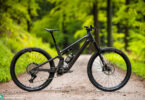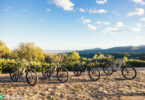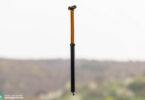At the sound of “electric motor,” most Ducati fans will burst into tears. However, the portfolio of the legendary motorcycle brand from Borgo Panigale now includes an eMTB equipped with a Shimano EP8 motor. How does the relatively new ebike brand fare against the experienced competition on the trail?
For an overview of the test fleet head to the group test: The best eMTB of 2021 – 25 models in review
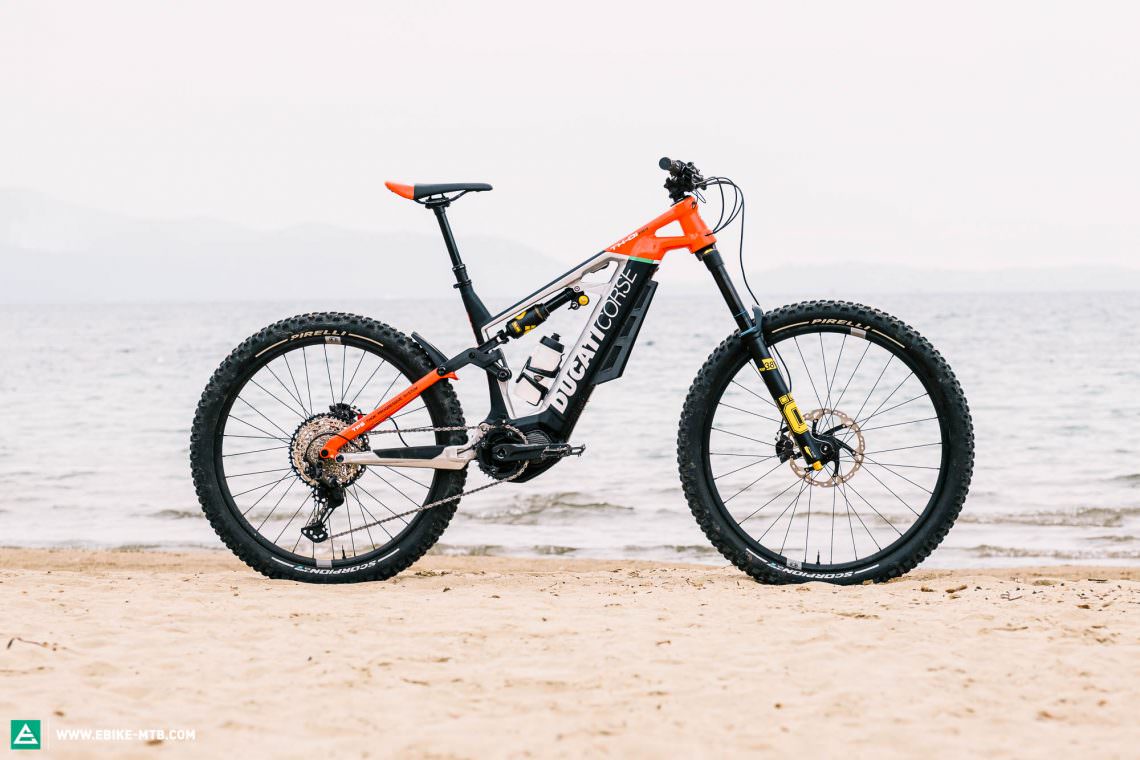
26.38 kg in size L | € 6,990 | Manufacturer’s website
Ducati make eMTBs!? Yes, they do, and for their TK-01 RR they’ve teamed up with Italian ebike manufacturer THOK. Ducati’s € 6,990 eMTB doesn’t run on petrol and instead draws its power from a 630 Wh battery which fuels the Shimano EP8 motor. The large mudguard on the down tube, the fender on the rear as well as paintwork inspired by Ducati’s race bikes all underline the affiliation with the Italian motorbike brand. The whole thing elicits a real Italian race feeling. But it’s not just the paintwork of the Ducati that stands out in our test field. The manufacturing quality of the alloy frame is also distinctive, though the rough welds on the swingarm and rocker leave something to be desired. On the other hand, the hefty skid plate on the motor is awesome: it looks good and is very robust, though it definitely contributes to the high weight of our prototype bike. At a whopping 26.38 kg, it’s the heaviest bike in the entire test field. The production bike will hit the scales at 25.6 kg, which is still pretty heavy.
For the spec of the TK-01 RR, Ducati rely on their motorsport partners
For the spec of the TK-01 RR, Ducati rely on their trusted motorsport partners, Pirelli, Öhlins and Renthal. While the 180 mm Öhlins RXF 38 fork takes longer to set up, it is, without a doubt, one of the best forks in the test. An Öhlins TTX air shock manages 170 mm of travel at the rear. Pirelli provide the wide 2.6” Scorpion tires, which come in 29″ at the front and 27.5″ at the back. The tires are heavy but correspondingly robust. Unfortunately, the hard rubber compound generates very little traction – the least in the entire test field. We recommend swapping them for the great tires on the MERIDA. Our test bike comes with previous generation Shimano XT four-piston brakes and 200 mm rotors front and rear. The final production bike will be equipped with the current model. At first glance, the 12-speed Shimano XT derailleur promises top shifting performance. However, Ducati have combined the derailleur with a cheaper SLX shifter, which lacks MULTI RELEASE, admittedly the only real advantage of the XT part apart from the lower weight.
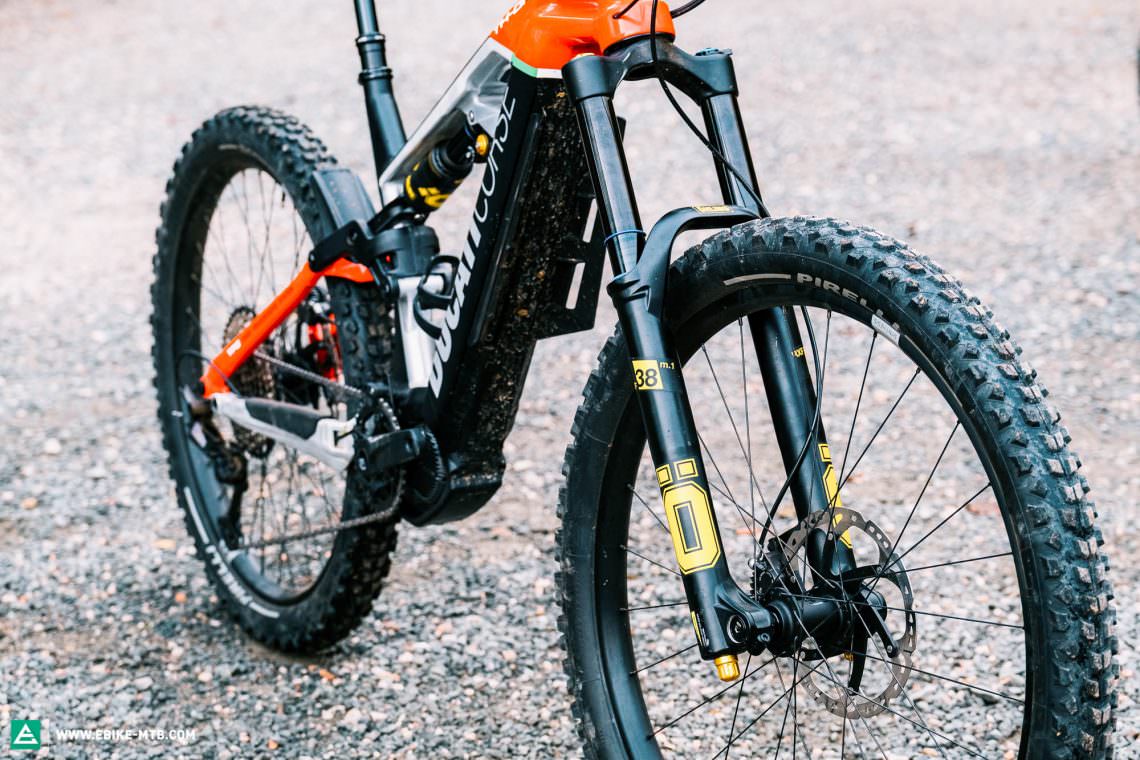
The Öhlins RXF 38 fork is extremely responsive, precise and provides great support. It’s one of the best forks in the test.
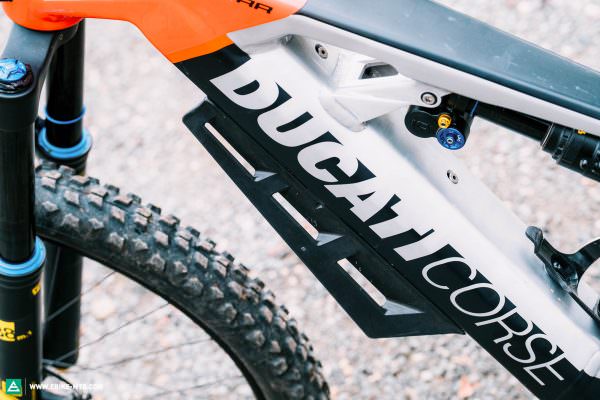
The fender on the down tube makes for an extravagant silhouette – as if the frame wasn’t striking enough already. If you think that it will keep mud off your face, you’re wrong.
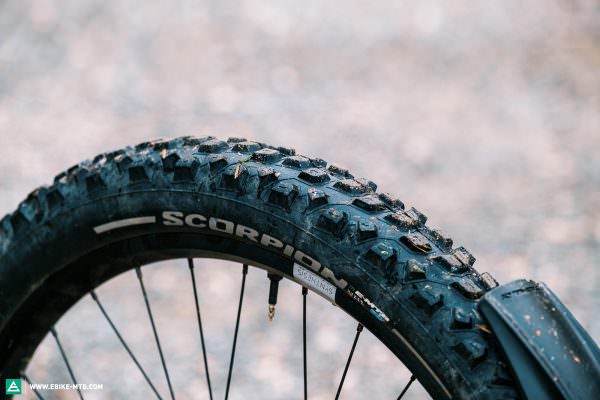
The tire-wheel combing of super robust Pirelli Scorpion tires and Crankbrothers wheelset is almost indestructible. Here you can and should experiment with low air pressures, because the hard rubber compound provides very little grip.
Ducati TK-01RR
€ 6,990
Specifications
Motor Shimano EP8 85 Nm
Battery Shimano BT-E8036 630 Wh
Display Shimano E7000
Fork Öhlins RXF 38 180 mm
Rear Shock Öhlins TTX Air 170 mm
Seatpost KS Dropper Post 125–170 mm
Brakes Shimano XT M8120 200/200 mm
Drivetrain Shimano XT 1x12
Stem Ducati CNC Alloy 50 mm
Handlebar Renthal Carbon 35 TBC 800 mm
Wheelset Crankbrothers Synthesis 29"/27.5"
Tires Pirelli Scorpion E-MTB S, TR SmartGRIP 2.6"
Technical Data
Size S M L XL
Weight 26.38 kg
Perm. total weight 145,5 kg
Max. payload (rider/equipment) 119 kg
Trailer approval no
Kickstand mount no
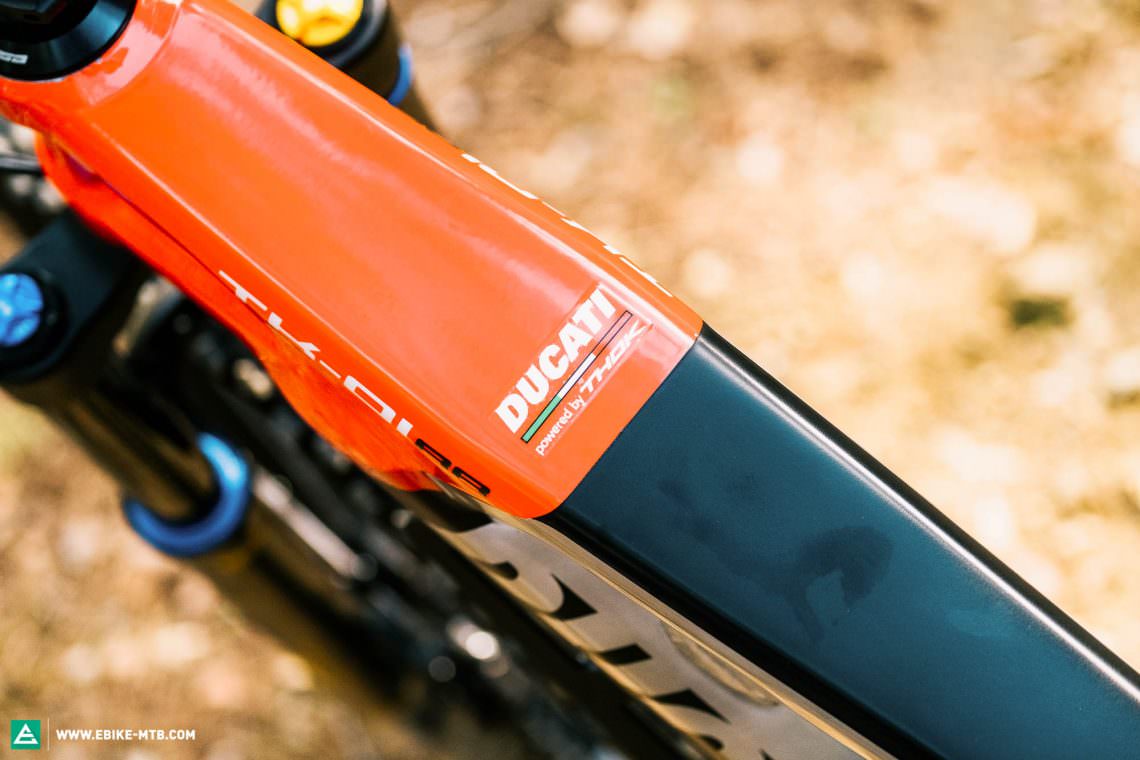
While the top tube of the Ducati is not the widest nor the squarest we’ve ever seen on a bike, at over 8 cm wide it’s pretty massive. We recommend wearing knee pads to prevent bruises on your knees when riding out of the saddle or getting rowdy.
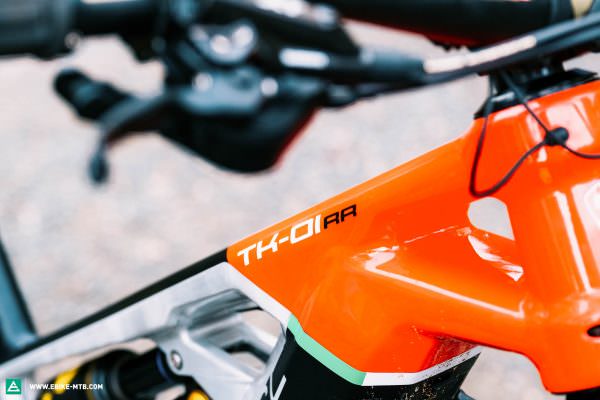
The Ducati TK 01 RR is proud of its Italian origins and motorsport heritage. This is made clear by the il Tricolore flag and the choice of components, which are provided by Ducati’s long-term partners from within the motorbike sector: Pirelli, Öhlins and Renthal.
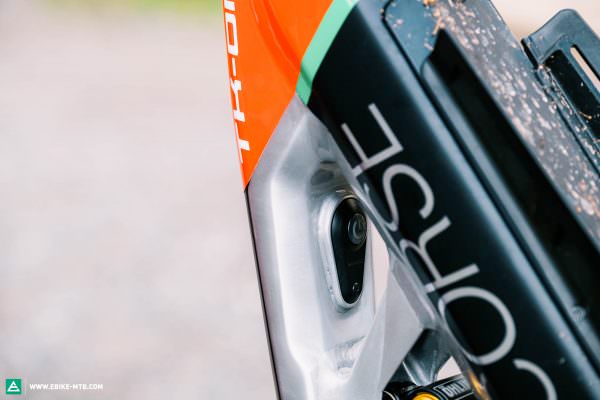
The power button of the Shimano EP8 motor is hidden under the top tube and yet quick and easy to reach. Very cool!
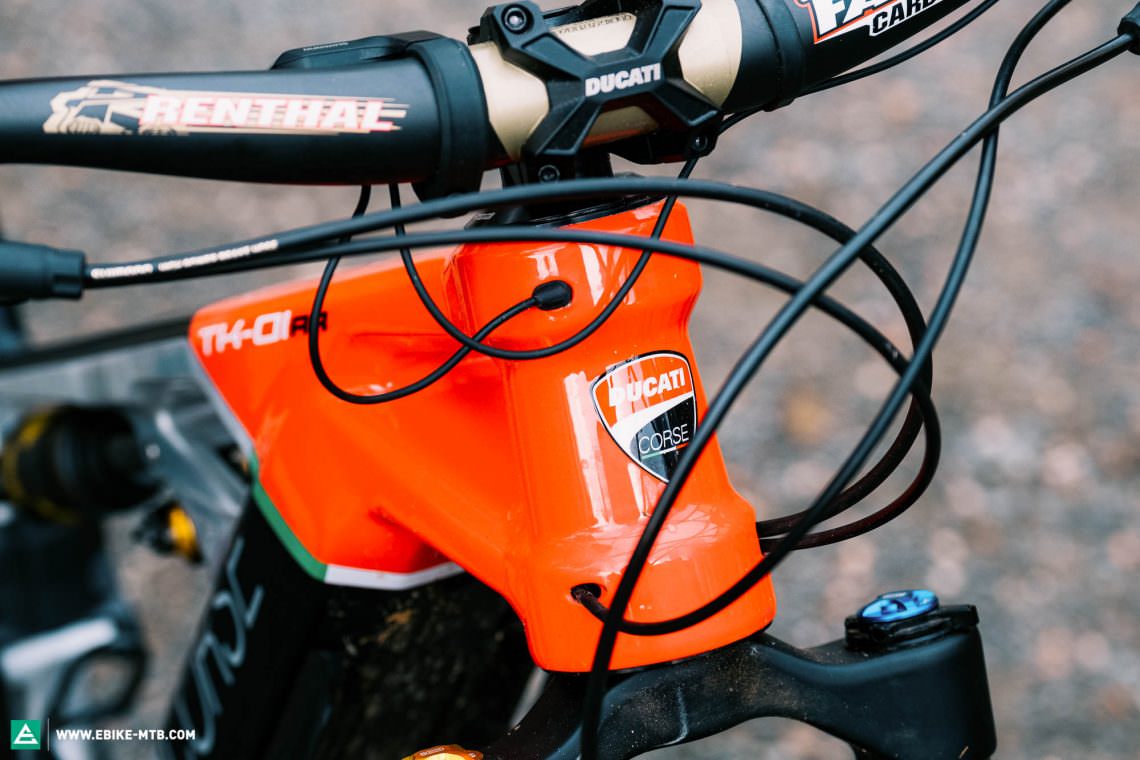
The cables are lovelessly crammed into the Ducati’s cockpit and disappear into the frame through several cable ports without clamps. Not only is this unappealing visually but it also results in an annoying rattling noise on the trail.
The Ducati TK-01 RR comes in four sizes and is designed to fit small and light riders from 1.54 m tall. However, petite riders should be warned that the high weight is hard to ignore, whether you’re out on the trails riding, moving the bike around the garage or loading it onto a bike rack. The fairly short seat tube (450 mm) and the 170 mm dropper (150 mm on our test bike) provide sufficient freedom of movement. Only when pedalling out of the saddle is it easy to hit your knees or thighs on the wide top tube, which flares out to 8.3 cm. Apart from that, the TK-01 RR proved to be a comfortable tourer on flat trails and long tours, evenly distributing your weight between your seat and hands.
| Size | S | M | L | XL |
|---|---|---|---|---|
| Seat tube | 385 mm | 415 mm | 450 mm | 495 mm |
| Top tube | 582 mm | 600 mm | 629 mm | 660 mm |
| Head tube | 105 mm | 115 mm | 131 mm | 149 mm |
| Head angle | 64.5° | 64.5° | 64.5° | 64.5° |
| Seat angle | 75.5° | 75.5° | 75.5° | 75.5° |
| Chainstays | 453 mm | 453 mm | 453 mm | 453 mm |
| BB Drop | 15 mm | 15 mm | 15 mm | 15 mm |
| Wheelbase | 1,212 mm | 1,233 mm | 1,265 mm | 1,298 mm |
| Reach | 423 mm | 439 mm | 464 mm | 491 mm |
| Stack | 623 mm | 623 mm | 638 mm | 654 mm |
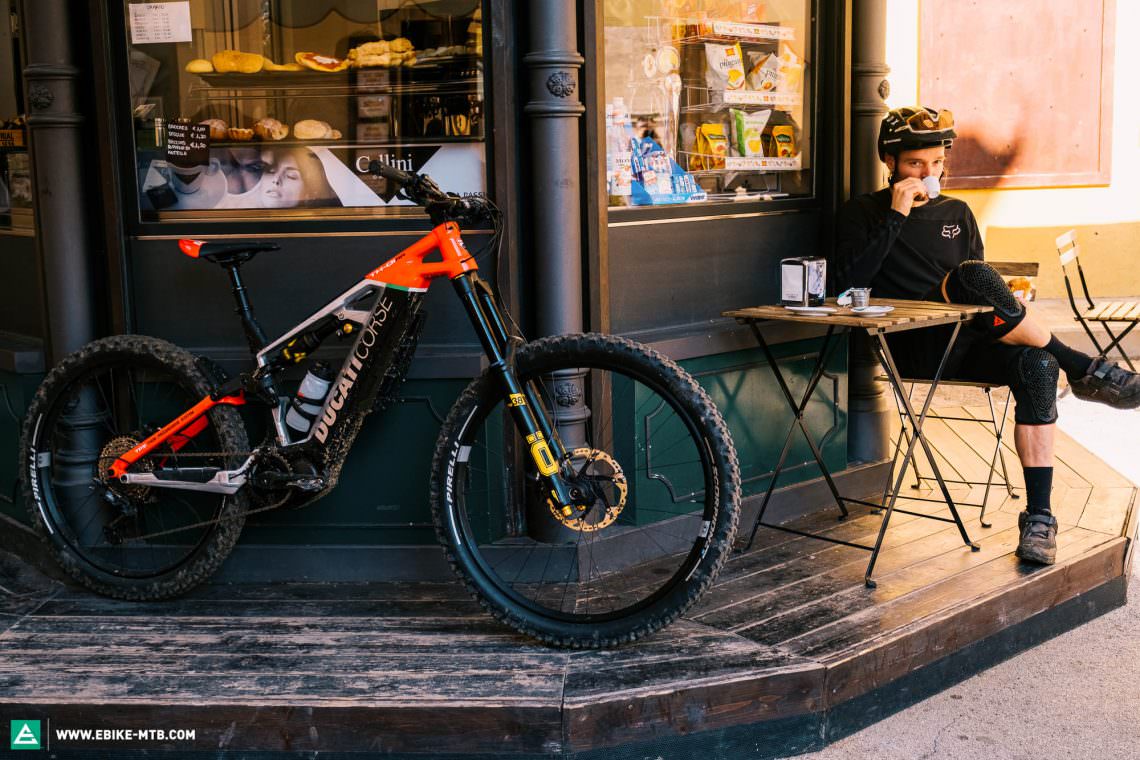
Jersey Fox Defend Delta LS | Shorts Fox Ranger Shorts | Kneepad Dainese Trail Skins 2
Shoes ION Rascal | Socks Fox 8″ Trail
Trail racing machine? Ducati TK01-RR on the trail
As soon as you take the Ducati up steep ramps, the rear end sinks into its travel, meaning that the front end has to be actively weighted to avoid lifting. Despite the bike’s weight, the front still easily lifts off the ground. Similarly, there’s only so much that the powerful EP8 motor can do to help you fight the heavy Ducati: the lack of traction from the tires makes it hard to transfer the motor’s 85 Nm torque to the ground, leaving the rear wheel spinning out of control. This is why the Ducati TK-01 RR falls behind almost all bikes in this test going uphill.
If you’re looking for an extravagant, prestigious bike, the Ducati might be exactly what you’re looking for. But that’s about it!
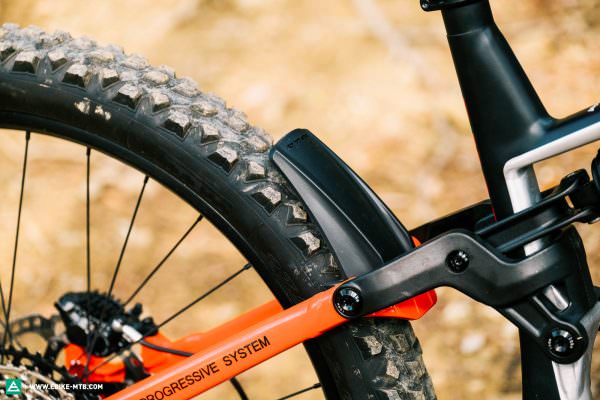
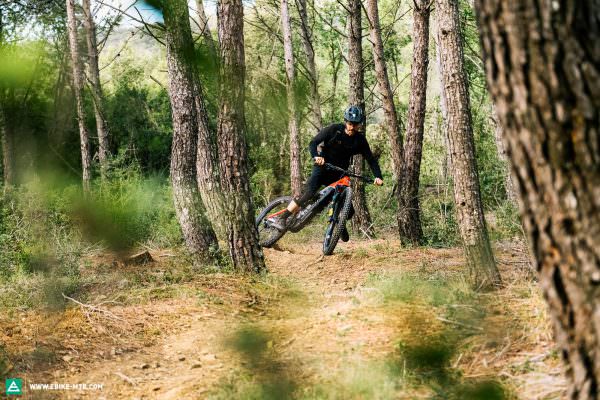
Tuning tip: grippier tires
With the Öhlins suspension, Ducati have hit the nail on the head. In particular, the excellent RXF 38 fork always keeps the front under control in all downhill scenarios. Despite this, the TK-01 RR can’t keep up with the competition on the trail. Whether you’re cornering or negotiating technical sections with steps and root carpets, the vague rear end and handling fail to deliver the goods. Despite the heavy and sluggish bike sticking to the ground and only becoming airborne with significant physical effort, grip is in short supply. While at slow speeds the heavy Ducati still conveys a good amount of confidence, this quickly changes when riding fast. With lots of high-speed compression damping, it can cope with botched landings and huck-to-flats, yet provides too little support and traction to be fast and feel safe at the same time. If you love riding fast, the TK-01 RR will condemn you to an eternal battle for traction and control.
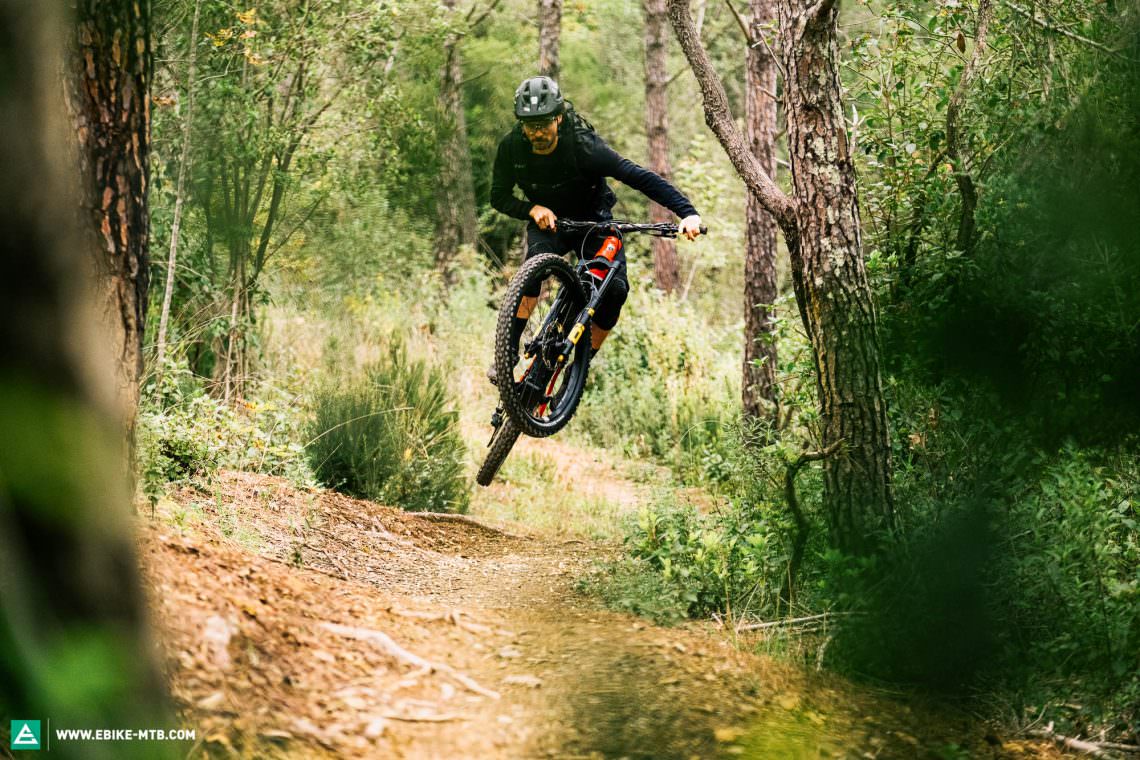
Riding Characteristics
7Agility
- sluggish
- playful
Stability
- nervous
- stable
Handling
- demanding
- balanced
Riding fun
- boring
- lively
Motor feeling
- digital
- natural
Motor power
- weak
- strong
Value for money
- poor
- top
Conclusion
Prestige, performance and speed: that’s what Ducati Corse stands for. The TK-01 RR doesn’t live up to this claim and falls to the back of the pack of our group test. The extravagant Ducati adds a touch of moto spirit to our test field, but it doesn’t inspire confidence at high speeds, feels sluggish when riding slowly and always lacks traction. Hardcore Ducati fans looking for a comfortable ebike for long tours will get their money’s worth. In light of the poor trail performance and despite the relatively low price, the Ducati doesn’t offer good value for money.
Tops
- Öhlins suspension
- extravagant Italo-racer style
Flops
- tires with the least traction in the test
- cumbersome and sluggish
- heaviest bike in the test
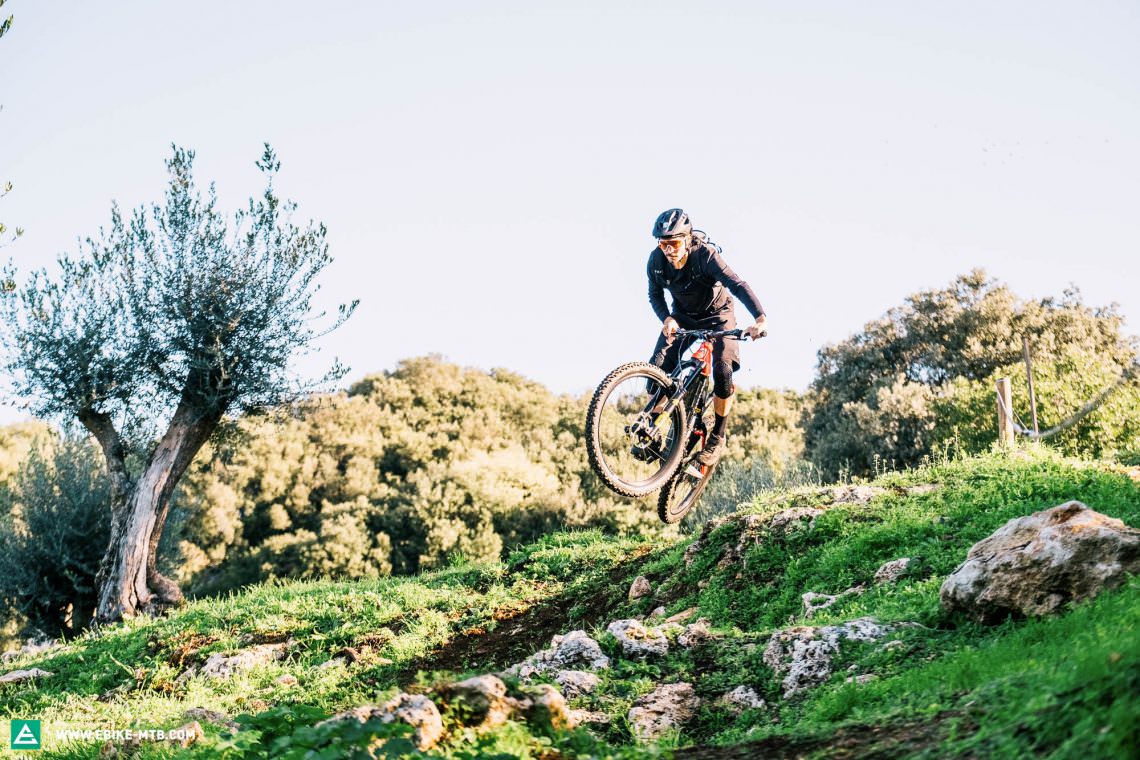
You can find out more about at ducati.com
The test field
For an overview of the test fleet head to the group test: The best eMTB of 2021 – 25 models in review
All bikes in test: Cannondale Moterra Neo Carbon 1 (Click for review) | Canyon Spectral:ON CF 9 (Click for review) | CENTURION No Pogo F3600i (Click for review) | CUBE Stereo Hybrid 140 HPC SLT Nyon (Click for review) | CUBE Stereo Hybrid 160 C:62 SLT Kiox (Click for review) | Ducati TK-01 RR | FLYER Uproc6 9.50 (Click for review) | FOCUS JAM² 6.9 NINE (Click for review) | GIANT Trance X E+ 1 (Click for review) | Haibike AllMtn 7 (Click for review) | KTM Macina Kapoho Prestige (Click for review) | Lapierre Overvolt GLP 2 Team (Click for review) | MERIDA eONE-SIXTY 10K (Click for review) | Mondraker Crafty Carbon XR (Click for review) | Moustache Samedi 29 Trail 8 (Click for review) | ROTWILD R.X375 ULTRA (Click for review) | Santa Cruz Bullit X01 RSV Air (Click for review) | SCOTT Ransom eRIDE 910 (Click for review) | SIMPLON Rapcon PMAX (Click for review) | Specialized S-Works Turbo Levo (Click for review) | Specialized S-Works Turbo Levo SL (Click for review) | STEVENS E-Inception AM 9.7 GTF (Click for review) | Thömus Lightrider E2 Pro (Click for review) | Trek Rail 9.9 X01 (Click for review) | Whyte E-150 RS 29ER V1 (Click for review)
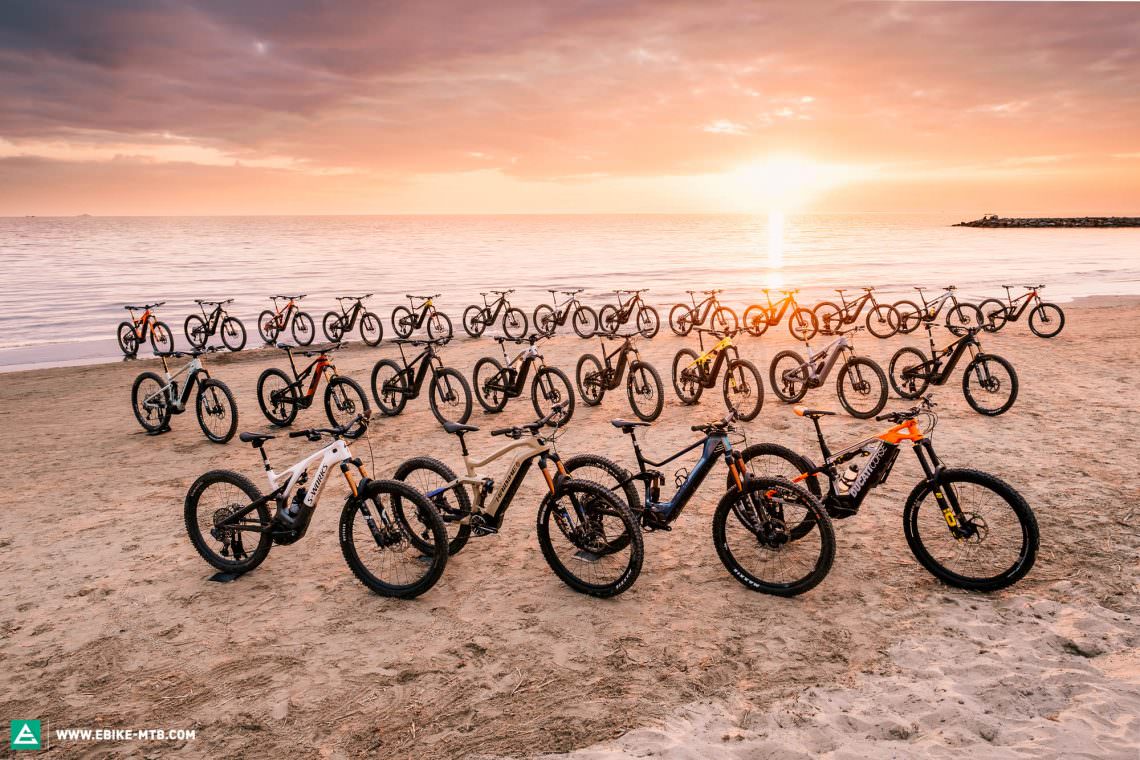
Relaxed and comfortable riding on surfaced roads, both uphill and downhill.↩
Easy climbs up trails with few obstacles, wide turns and a moderate incline.↩
Active and playful descents on easy trails with few obstacles, wide turns and a moderate slope.↩
Single-track climbs on challenging terrain. Loose ground, steps, roots, tight corners and occasionally extreme inclines.↩
Singletrack descents on challenging terrain. Loose ground, steps, roots, tight corners and small jumps as well as some very steep descents.↩
High speed descents on sometimes very rough trails with large jumps and obstacles that you can’t roll over.↩
The rating used for riding characteristics refers to the bikes in the group test and the current state of development of eMTBs. The best bikes managed to blend supposedly opposite riding characteristics, feeling both lively and stable at the same time. The handling describes the balance of the bike on downhill sections. The information regarding motor-power refers to the ride-feeling in the overall context of the bike and not exclusively to the motor – that’s why the same motor can present different values.↩
Did you enjoy this article? If so, we would be stoked if you decide to support us with a monthly contribution. By becoming a supporter of E-MOUNTAINBIKE, you will help secure a sustainable future for high-quality cycling journalism. Click here to learn more.
Words: Photos: Various




